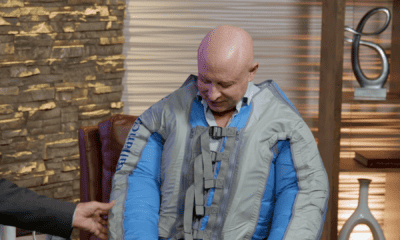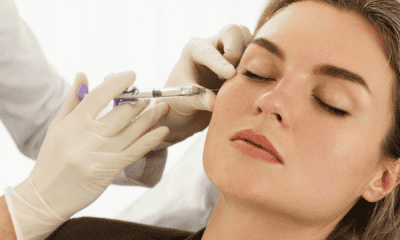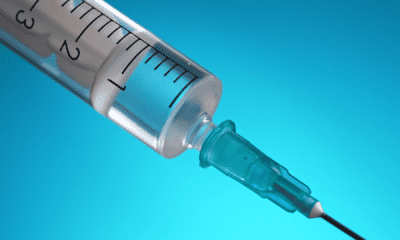General anesthesia gets a bad wrap. Coupled with the exponential emergence of non-surgical and minimally-invasive devices available today, many plastic surgery patients have avoiding general anesthesia and the OR at the top of their list. Add the desires of modern patients to have “quicker,” recovery-minimized procedures and general anesthesia really gets put on the back burner.
While there are certainly instances of general anesthesia causing rare problems, is it safe, generally? Board certified plastic surgeons discuss the modern situation and why general anesthesia is actually very safe, and, in many instances, the better route to take.
Concerns About Anesthesia: Is it Safe?
General anesthesia is a truly fascinating process that surgeons utilize to solve problems on the surgical table. It does come with some downsides, but these risks have to be weighed. The truth is, general anesthesia, statistically, is extremely safe. And that’s before even mentioning the technological progress the strategy has benefited from over the last handful of decades.
“I think it’s an inappropriate fear,” shares Dr. Ned Snyder, a board certified plastic surgeon in Austin. “Statistically, someone is more likely to die in a car crash on the way to the surgery center than they are under general anesthesia. The analogy I always give to patients is, millions of people go to sleep under general anesthesia and wake up every single day, just like flying in commercial aircraft.”

The aircraft analogy is a good one, as both flying and general anesthesia are things that the average person does infrequently. Because they themselves may only participate in such situations a handful of times, they may have more anxiety about the what-ifs. Statistically speaking, air travel is orders of magnitude safer than riding in a car, yet a lot more people fear flying than they do driving down the road to the grocery story. General anesthesia is similar, but patients should know that not only is it extremely rare, but the chances of something bad happening continue to be reduced by the expansion of technology and techniques.
General Anesthesia Science Has Advanced
Concerns surrounding anesthesia may have been more warranted and prevalent a few decades ago when technology was less powerful. Indeed, millions of patients underwent general anesthesia back when cell phones weren’t yet dreamt of. Consider the incredibly rapid progression technology in all other sectors of life; anesthesia technology and technique has grown, too!
“I emphasis that anesthesia is so much safer today than it was 20 years ago,” explains Dr. Brooke R. Seckel, a board certified plastic surgeon in Boston. “We’ve got instantaneously arterial oxygen monitoring, we have brain wave monitoring; it’s hard to get into trouble. I think most of the fear of anesthesia probably relates to people’s experience in the 50’s and 60’s.”

For patients who remain concerned, it’s important for them to not only select the right surgeon, but to verify that they will also be under the care of a board certified anesthesiologist, both physicians working in a properly accredited surgical center. With these boxes checked, paired with numerous advances in anesthesia technology, patients have never been safer on the OR table.
What About Local-Only Anesthesia?
As with the burgeoning non-surgical and minimally-invasive procedures, more and more patients ask if their desired procedure can be done under local anesthesia, where they do not “go under” and can have it performed in the surgeon’s office. Numerous procedures do exist in this realm, and sometimes local anesthesia lends itself better and may be the best option all around.
“There are things that we do in the office all the time,” says Snyder. “Things from as small as lesion excisions and things like that, but even a blepharoplasty.”
Depending on the skill and experience of your surgeon, local-only can be a legitimate choice. As Dr. Snyder mentioned, eyelid surgery, or blepharoplasty, is a good example of a surgical procedure that used to be reserved for the OR and general anesthesia. As techniques and technologies improve, plastic surgeons with extensive experience in eyelid surgery find that they can accomplish the same results and safety under local. This winds up delivering an easier recovery for patients, and nulls concerns over general anesthesia.

That said, not all surgical procedures are candidates for local-only. “I always encourage the patients to understand that there are disadvantages to local anesthesia,” details Dr. Seckel. “One, your operation is going to take longer because if you feel something, you’re going to say, ‘Oh, I need more [anesthesia].’ I think most procedures probably take an hour and a half less under general, and patients respond to that. I really think general anesthesia today is a safer way to do it.”
Balancing Recovery, Safety, and Results
Ultimately, there is no best option. General anesthesia is a tool, one that has been honed continually for decades. Local anesthesia is the same. There are positives and negatives to both, so selecting the right surgeon to offer the best advice continues to be the paramount concern for patients. If a patient desires a facelift but wants it under local, a great, board certified surgeon will caution them away from this, explaining that while general anesthesia in the operating room seems “more serious,” it may actually take less time, provide more comfort, and allow the surgeon to achieve the greatest possible results.
“As a patient, you want to be safe first,” shares board certified plastic surgeon Dr. Bruce Van Natta of Indianapolis. Not only should safety be the top concern for patients, but it must be remembered that this is also the case for your surgeon. Plastic surgeons are, after all, physicians, and their top priority is patient safety. “You want to get the result,” Van Natta continues, “And we want your safety to be paramount.”
















Facebook
Twitter
Instagram
YouTube
RSS